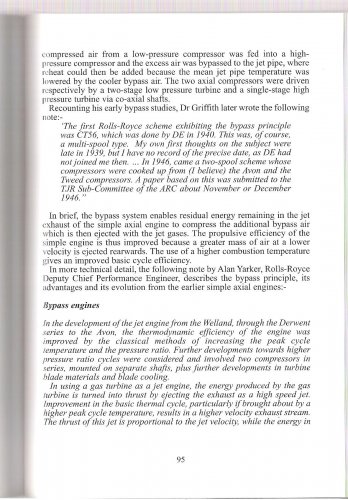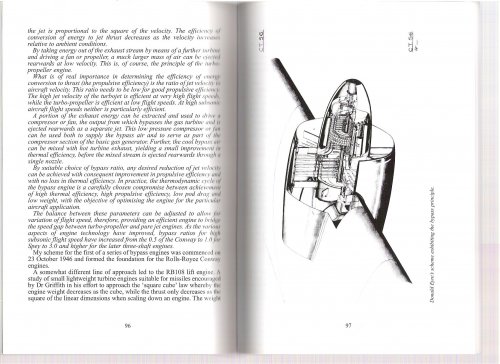charleybarley
ACCESS: Confidential
- Joined
- 6 December 2012
- Messages
- 90
- Reaction score
- 48
I'd always understood that the Conway was a bypass engine for the same reason as its competitors (JT3D, CJ805-23B) ie to improve the poor propulsive efficiency of the turbojet. It seems that was not the case.
I've just come across this gem in A. McKenzie's "Axial compressor development at Derby".
Dr AA Griffith's solution for low speed surge margin was to bypass air from the LPC. The split compressor alone was not sufficient to alleviate the low speed off-design mismatching.
So it seems any performance gain as a bypass engine would be a bonus, but not the prime reason for the bypass.
Split compressors worked ok on the Olympus and J57. Perhaps their lower pressure ratios helped them to work without bypass: Olympus 201 10:1 and J57 12:1.
I don't believe any of them had VIGVs or bleed valves either.
Any thoughts?
I've just come across this gem in A. McKenzie's "Axial compressor development at Derby".
Dr AA Griffith's solution for low speed surge margin was to bypass air from the LPC. The split compressor alone was not sufficient to alleviate the low speed off-design mismatching.
So it seems any performance gain as a bypass engine would be a bonus, but not the prime reason for the bypass.
Split compressors worked ok on the Olympus and J57. Perhaps their lower pressure ratios helped them to work without bypass: Olympus 201 10:1 and J57 12:1.
I don't believe any of them had VIGVs or bleed valves either.
Any thoughts?




